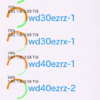中古ノートパソコンを使ってUBUNTUでお気楽簡単自宅サーバを作ろう。リモートデスクトップ設定編、Let’s make a comfortable and easy home server with UBUNTU using a used laptop. Remote desktop setting
「中古ノートパソコンを使ってUBUNTUでお気楽簡単自宅サーバを作ろう。リモートデスクトップ設定編」ということで、UBUNTUでサーバ環境(リモートデスクトップで設定する)を作ってみます。今回は下地の部分です。
“Let’s make a comfortable and easy home server with UBUNTU using a used laptop. Remote desktop setting", I will create a server environment (set with remote desktop) with UBUNTU. This time it is an introduction of the basic part.
基本の機能部分で設定したいのは以下のことです。
〇常時稼働(機能を足して、常時接続待ちをしたいので)
〇ふたを閉めても、「サスペンドしない」、「再起動できる」
〇UBUNTUのリモートデスクトップ(RDP)と、補助的にVNCを接続できる環境にする
〇キーリングを解除しないと、リモートデスクトップのパスワードが変わってしまうので、解除する。
〇一応の安全のため、ファイやウォールは基本待ち受けしないで、RDPとVNCだけ(今のところ)許可する。
ことになります。
※RDPクライアントとしてmRemoteNGでの設定を紹介しています。
What I want to set in the basic function part is the following.
〇Always on (because I want to add functions and always wait for connection)
〇Even if the lid is closed, “does not suspend", “can restart"
〇 Create an environment where you can connect UBUNTU’s remote desktop (RDP) and VNC as a supplementary
〇 If you do not release the key ring, the remote desktop password will change, so release it.
〇For the sake of safety, basically do not listen to firewalls and walls, and allow only RDP and VNC (as a function at the moment).
*Introducing mRemoteNG settings as an RDP client.
0.大げさな装備はいらない。
サーバパソコンはサーバ用のCPUで作るのでサーバであるとか、100人もいっぺんに使わないのにRAIDですとか、RAIDミラーリングとバックアップを混同したり、サーバ版OSだからサーバだとか、SSHとFTPだからサーバとか、流行りはProxmoxだからいれてべんりだウェウェとか・・・家庭用の3,4人が使うサーバには全く無意味なことです。
商用のサーバだからSSHとFTPでないといけないのであって、数GBあるような今のPCの中で、軽いLinixのデスクトップ環境0.2GBに目くじらを立てて、サーバ版にするなんてもう無意味すぎです。
ローカル環境に直につながっているのです、デスクトップがあれば、各種の使用量などもグラフで把握できるのに、リモートデスクトップを使わないので通ですって・・・ああ神よ!悲しいことです。
0. No need for fancy equipment.
A server computer is a server because it is made with a server CPU, RAID is used even though it is not used by 100 people at once, RAID mirroring and backup are confused, server version OS is a server, SSH and FTP are a server , Proxmox is the trend, so I put it in. it’s a commercial server, it has to be SSH and FTP But it’s completely meaningless for a home server used by 3 or 4 people.
Because It’s enable that a light Linux desktop with environment of 0.2 GB on a PC with several GB, it’s too pointless to make at a server version OS.
“It’s directly connected to the local environment. If you have a desktop, you can see various usage amounts in graphs, but you don’t use remote desktop, so you can’t use it… Oh God!" It’s sad.
1.IPアドレスの固定
今のルータはDHCP機能が普通ですが、MACアドレスから認知して固定IPをリースしてくれます。この機能を使って設定しましょう。
1. Fixed IP address
Current routers usually have a DHCP function, but they recognize from the MAC address and lease a fixed IP. Let’s use this function to set.
2.ふたを閉じていても、起動できるようにする。さらに、サスペンドもしないようにする。
/etc/systemd/logind.confを編集して、
HandleLidSwitch=ignore
にします。
いったん再起動。
2. Make it possible to start even if the lid is closed. Also, don’t suspend.
Edit /etc/systemd/logind.conf to
HandleLidSwitch=ignore
And reboot.
3.キーリングの解除(リモートデスクトップパスワードが自動で変わらないようにする。)
アクティビティで、「パスワードと鍵」を起動します。そのウインドウの右ペインの「ログイン」から、「ロックを解除」します。(パスワードはログインパスワードと同じです。)次に、同じ右ペインの「ログイン」からパスワードの変更を選び、元のパスワードにログインパスワードを入れて、変更後のパスワードはなにも入れないで(ブランクで)設定します。
3. Unlock the keyring (Prevent the remote desktop password from changing automatically.)
In Activities, activate “Passwords and Keys". From “Login" in the right pane of that window, select “Unlock". (The password is the same as the login password.) Next, select Change Password from “Login" in the same right pane, enter the login password in the original password, and do not enter anything in the new password (blank ).
4.リモートデスクトップ設定をする。
「設定」のウインドウをだして、右ペインで共有を押す。タイトルの「共有」の右横のスイッチをONにする。
左ペインの「リモートデスクトップ」を押す。出てきた同名のウインドウで、「リモートデスクトップ」スイッチをONにする。「レガシーなVNCプロトコルを有効にする」のチェックボックスをチェックして、右の3つの点を押して「パスワードを要求する」のラジオボタンをチェックする。すぐ下の「リモートコントロール」のスイッチをONにする。一番下にある「認証」の「ユーザ名」を「zundamon@outlook.jp」とドメイン付きの名前にする。(Windowsのリモートデスクトップのポリシーのためと思われる。)「パスワード」を設定する。
4. Configure remote desktop settings.
Open the “Settings" window and press Share in the right pane. Turn on the switch to the right of “Share" in the title.
Press “Remote Desktop" in the left pane. In the window with the same name that appears, turn on the “Remote Desktop" switch. Check the “Enable legacy VNC protocol" checkbox, press the three dots to the right and check the “Require password" radio button. Turn on the “remote control" switch at the bottom. Change the “user name" of “Authentication" at the bottom to “zundamon@outlook.jp" and a name with a domain. (It seems to be due to Windows Remote Desktop policy.) Set “Password".
5.ファイアウォールの設定
デフォルトでは閉じていて、リモートデスクトップだけを許可するようにファイヤウォールを設定します。RDPはポート番号3389です。念の為VNCのポート番号5900,5901も許可します。以下のコマンドで設定してください。
It is closed by default and configure your firewall to allow only Remote Desktop. RDP is port number 3389. Just to be sure, allow VNC port numbers 5900 and 5901 as well. Please set with the following command.
$ sudo ufw enable
$ sudo ufw default deny
$ sudo ufw allow 3389
$ sudo ufw allow 5900
$ sudo ufw allow 5901
$ sudo ufw reload5.1.各アドレスを表示させて把握する。
5.1. Display and understand each address.
以下のようにコマンドを打って、MACアドレス(XX:XX:XX:XX:XX:XXという形式です)、それとIPアドレス(ほとんどの場合192.168.X.Xという形式です)を、把握しましょう。特にMACアドレスは、そのパソコン固有の番号なので、ルータでIPアドレスの固定する設定に使えます。
Get the MAC address (in the format XX:XX:XX:XX:XX:XX) and the IP address (mostly in the format 192.168.X.X) by typing the command below. In particular, the MAC address is a unique number for that computer, so it can be used to set a fixed IP address with a router.
$ ip a ここで、リブートして、パソコンに対しての、各種の設定の適用を確実にします。
Now reboot to ensure that the various settings are applied to the computer.
6.クライアント側でのリモートデスクトップソフト「mRemortNG」の利用と設定
6. Use and setting of remote desktop software “mRemortNG" on the client side
いろいろなリモートデスクトップクライアントがありますが、今回は「mRemoteNG」を使ってクライアント側からのリモートデスクトップを試します。以下のWebページからダウンロードします。
There are various remote desktop clients, but this time I will try remote desktop from the client side using “mRemoteNG". Download from the following web page.
https://mremoteng.org/
mRemoteNGの左上のペインに、新規接続先を作成してください。そのままでその接続先が選ばれているので、左下のペインで具体的な設定をします。接続先の名前、IPアドレス、接続用のログイン名とパスワードを設定してください。もうバグフィックスしているかもしれませんが、念の為、カラーモードは32ビットフルカラーに設定します。
Create a new connection in the top left pane of mRemoteNG. Since the connection destination is selected as it is, make specific settings in the lower left pane. Set the connection destination name, IP address, login name and password for connection. They may have already fixed the bug, but just in case, set the color mode to 32-bit full color.
設定完了後に左上ペインの接続先名を押せば、すぐに接続されます。最大化してリモートデスクトップペインウインドウのタブから「Smart Size」を選択し適応させます。この機能によりリモートデスクトップは、今のウインドウの大きさにフィットされて全体を見えるようになるため、操作が便利になります。これから後の設定処理はこのリモートデスクトップから行います。
After completing the settings, if you press the connection destination name in the upper left pane, you will be connected immediately. Maximize and select “Smart Size" from the tab of the remote desktop pane window to adapt. With this function, the remote desktop can be fitted to the current window size and the whole can be seen, making it convenient to operate. From now on, the configuration process will be done from this remote desktop.
7.ブランクスクリーンにならないように設定して、いつでもリモートデスクトップを可能にする
7. Enable remote desktop at any time by setting never to blank screen
「設定」ウインドウを開き左ペインから「電源管理」を選択します。このウインドウの右ペインに、「画面のブランク」があるので、この項目について「しない」を選択します。これでいつでもリモートデスクトップが接続出来るようになりました。でも、このままではLCDが焼き付くかもしれないので、スクリーンセーバーを入れます。以下のコマンドを打ち込みます。
Open the Settings window and select Power Management from the left pane. In the right pane of this window, there is “Blank screen", so select “No" for this item. Now you can connect to remote desktop anytime. However, since the LCD may burn in as it is, I will install a screen saver. Type the following command.
$ sudo apt install xscreensaver xscreensaver-gl-extra xscreensaver-data-extra このままだとスクリーンセーバーは、自動で起動はしないので、GNOME desktopの「自動起動するアプリケーションの設定」に、以下のコマンドを入れます。
If this is the case, the screensaver will not start automatically, so enter the following command in the GNOME desktop’s “Auto-start application settings".
xscreensaver -nosplash デフォルトで10分でスクリーンセーバーが働きますので問題ないでしょう。
By default, the screen saver will work after 10 minutes, so there should be no problem.
以上で設定方法の説明は終わりです。
一連の操作法をyoutube動画にしましたので、上記の説明より詳しく知りたい人は見てくださいね。英語の字幕付きです。
This is the end of the explanation of the setting method.
I made a series of operation methods into a youtube video, so if you want to know more than the above explanation, please watch it. It has English subtitles.






ディスカッション
コメント一覧
まだ、コメントがありません